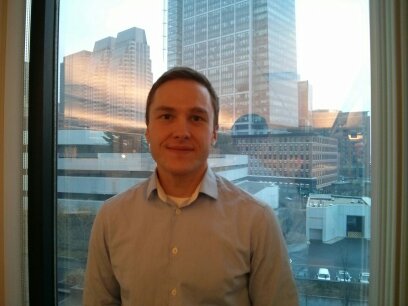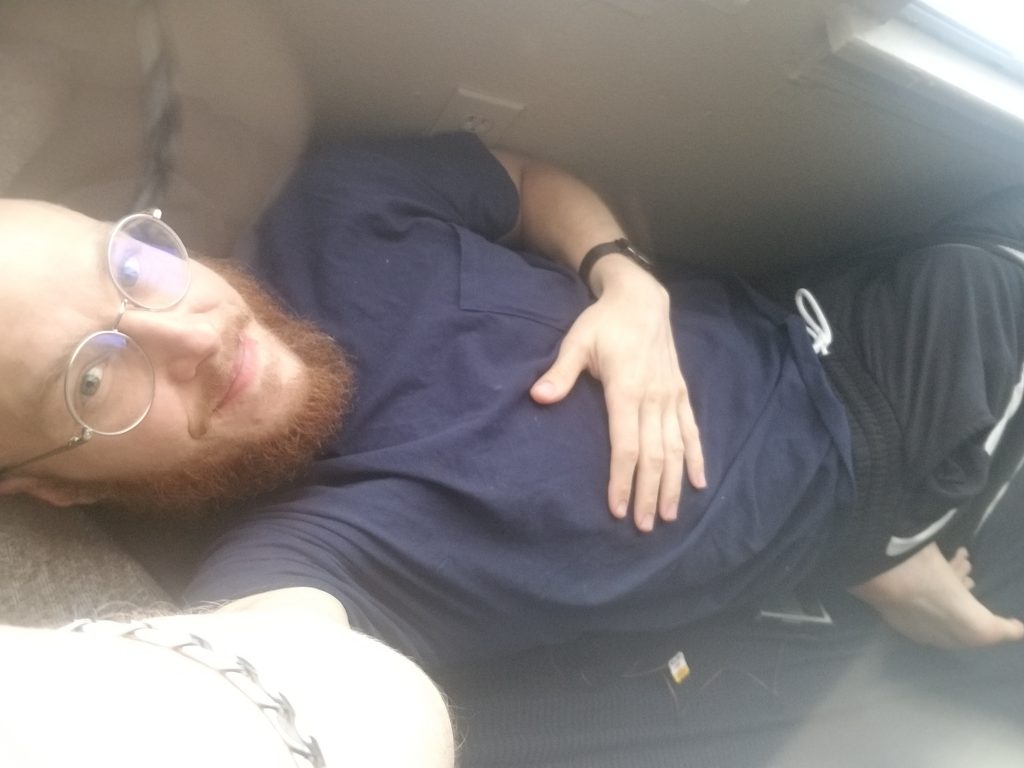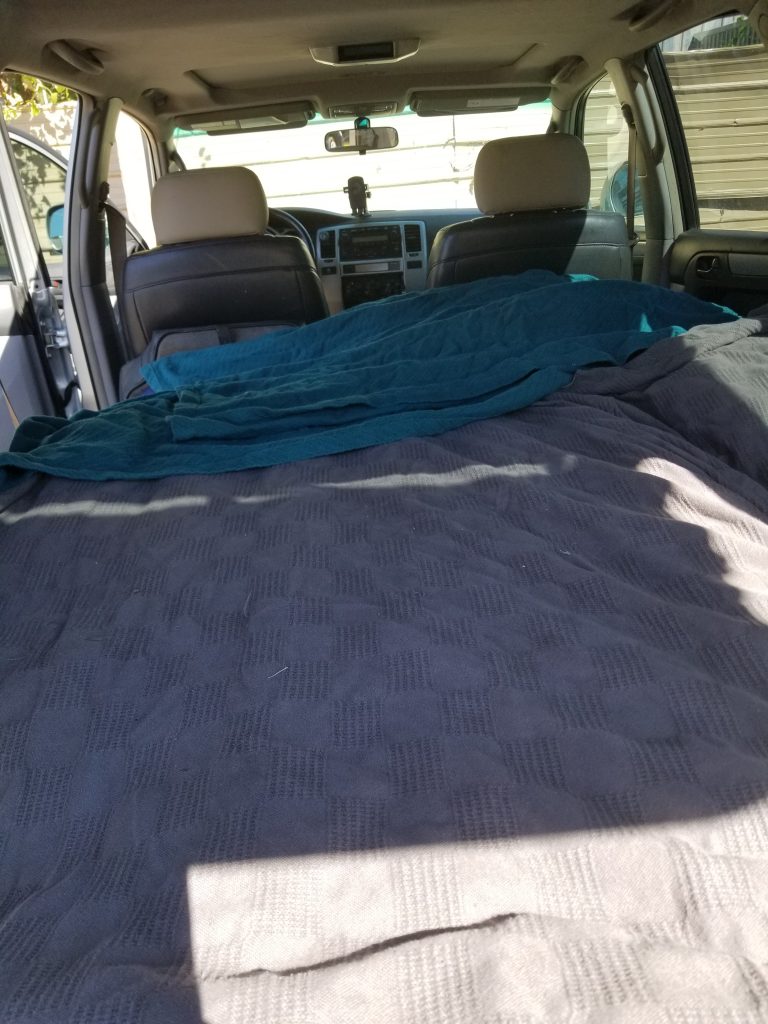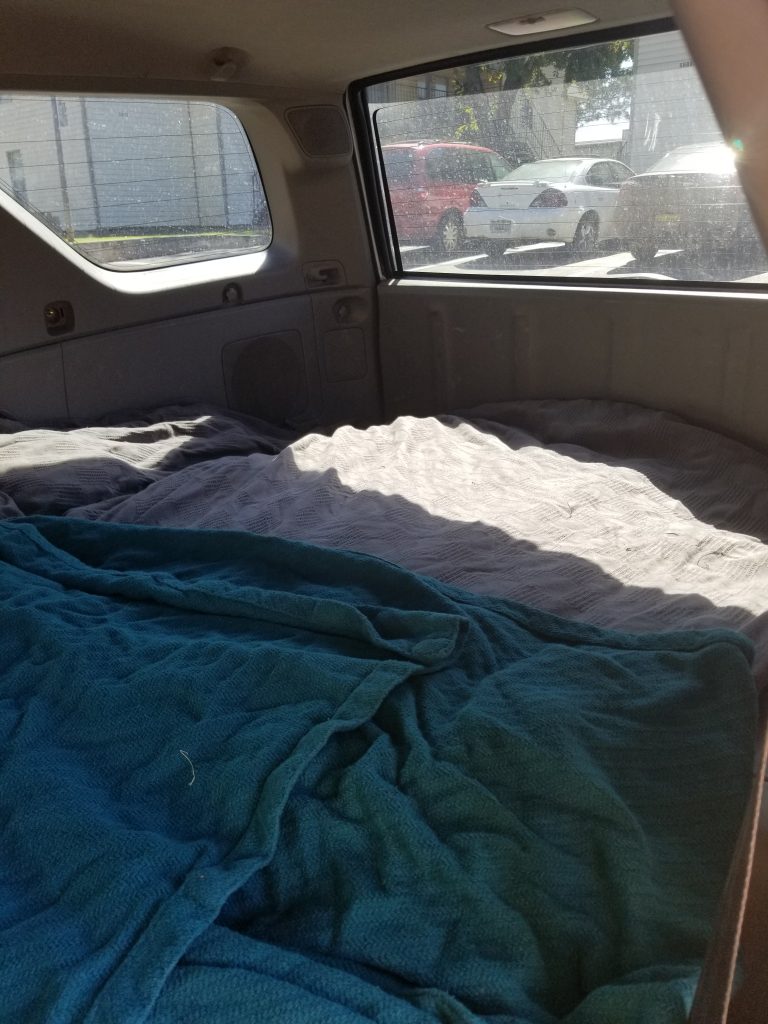Nick B. thought he was making smart choices when, in 2008, he left his native Nashville and headed west to Dallas-Fort Worth to begin his studies at The University of Texas at Arlington. He majored in computer engineering, and took a particular interest in software development for mobile devices. He had scrutinized tech trends, and predicted that smartphone apps would become the industry’s new hot spot.
When he graduated in 2012, his prediction was becoming manifest, and he had every reason to expect an exciting and lucrative career. For a while, he appeared to be right. Straight out of college, Nick moved to Oklahoma and got a string of software development jobs in the financial, educational, and technology sectors. His third job finally placed him squarely in a mobile software development role. Bigger companies came courting, and Nick knew that as a talented and experienced developer, the negotiating power was all on his side.
Not Winning Any Healthy Living Awards
While at college, Nick picked up the sorts of bad habits that were typical of his peers. He would cap off a study session with hours of computer game play. He liked the type of food that leaves a greasy stain on the wrappers. He drank Coca-Cola, or beer. Sometimes he drank too much alcohol, and smoked up to a pack of cigarettes a day. From time to time, he also experimented with marijuana.
Okay, so he wasn’t earning any healthy living awards, but any emergency room doctor had certainly seen worse.
In retrospect, it seems obvious that Nick’s health would collapse eventually. But he wasn’t expecting it to happen in his mid-20s, and he certainly didn’t think his back would be the first thing to go.
To be fair, Nick knew he wasn’t immortal, and after college he started tackling his bad habits one by one. Shortly after he was thrust out of the ivory tower, he quit smoking. And a couple years later, he got his alcohol consumption under control. Marijuana was easy to eliminate, since he had never been more than an occasional user. He experimented with healthier diets.
But despite these ostensibly healthy changes, Nick didn’t feel any better. Quite the opposite, in fact. When Nick stopped drinking, he realized that the insomnia that had started to plague him was not a consequence of the alcohol. Instead, it was due to back pain, a sensation the alcohol had helped to mask. There were many nights when Nick could only lull himself to sleep with a handful of painkillers.

The Fragile Arch
But what exactly was causing Nick’s pain? The answer turned out to be spondylolysis (pronounced spon-deh-LOL-eh-sis), a tongue-twister of a disorder that involves a fracture in one of the bony protrusions on the back of the vertebrae. Nick’s condition was categorized as anterolisthesis, meaning his L5 vertebrae had slipped forward about 3 millimeters over the vertebrae below.
The injury that caused Nick’s vertebral fracture likely happened years before Nick noticed the consequences. Fractures of this sort are typical in adolescent spines, and are often the result of sports injuries from activities that require repeated extension and flexion of the spine. Gymnasts, for example, have high rates of spondylolysis – 11% of female gymnasts are thought to be affected. Athletes in sports like football, soccer, baseball, cricket, and weightlifting, also suffer high rates of injury.
A CT scan Nick underwent in 2017 also indicated that his spinal issue had been present for some time, though the radiologist could not say with certainty whether it was due to a previous injury or a congenital defect.
Before his computer-centric time in college, Nick enjoyed roughhousing with his friends and playing sports. In grade school, he played football and soccer, and in high school he competed in lacrosse and rugby.
If Nick did end up with a fracture without realizing it, he wouldn’t be the only one. Many young athletes with spondylolysis don’t realize it at the time. They’re often in great shape, and unknowingly use their core muscles to stabilize their spines. But when these young athletes get older, stop playing sports, and lose their physical conditioning, their spinal defects start to manifest as pain.
When Nick transitioned from a dedicated athlete to a gamer and software developer, he was no longer challenging his core muscles. This loss of fitness might well have contributed to the gradual onset of pain.

Making Ends Meet
By 2016, Nick had his pick of job offers, but there was an unfortunate commonality among them – they all required him to keep his butt in a chair. Nick saw two options – he could either accept a job he knew he wasn’t capable of doing long-term, or he could give up office work altogether and find something more suited to his physical needs.
The prospect of suffering through a job that he’d eventually have to leave didn’t sound that appealing to Nick, so he chose the latter.
But finding suitable work would prove to be more difficult than it sounded. A full-time job was out of the question; forty hours a week of sucking up pain wouldn’t leave him with enough time to recover. But his college degree and work experience left him strangely ill-qualified for standing jobs, which clustered in low-paying industries such as food service and retail.
He worked a string of retail jobs. He was a cashier at a clothing store, then worked sales at a hardware store and a nutrition shop. But he wasn’t properly conditioned for these jobs either, and his aching legs eventually forced him to quit. His stint as an Uber driver – chosen for its flexible hours – was doomed from the beginning.
Nick lived alone, and were it not for the disability benefits he received, his meager income from these jobs wouldn’t have been enough to cover his basic expenses. He might have ended up homeless, or worse.
“It’s hard to navigate my low points when I don’t have a safety net,” Nick said. “I’m very thankful for having the disability money. If it wasn’t for that, I don’t know where I would have been.”
Nick Discovers His Own Mind-Body Connection
Nick’s professional sacrifices were part of a total life overhaul. It made no sense to give up on a lucrative career if he was just going to languish in pain anyway. So he redoubled his commitment to healthy living, and went out in search of ways to help manage his condition.
First on the list was sitting. Nick decided it was more trouble than it was worth, and started looking for ways to cut it out. At home, he’d lay on the floor with his computer screen propped on two chairs. He learned that laying on his side was more comfortable than laying on his back, which necessitated experiments with other strange computer positions.
But he still had to sit sometimes, especially when driving. This led to pain, which Nick still needed to figure out how to manage. He tried controlling his pain through prescription medications, as well as self-prescribed drugs and alcohol. But Nick learned early on that while these substances masked pain in the short-term, they led him to ignore and overrule his body’s pain signals. Eventually, he would pay for any short-sightedness.
He explained, “If I use medical marijuana, or opioids, I’ll feel good when I do it, but I’ll lose that mind-body connection. Once I go down that road, I might feel good, but my body will know it’s fighting an injury, and it won’t let me sleep. I always have to get back to that equilibrium by removing any substances.
“Instead of distracting myself and avoiding the pain – which I had a habit of doing – I need to take that pain and keep it close. I need to keep an eye on it. I need to listen very closely to what my body needs for pain relief.”
His next priority was fixing his diet. In his twenties, he had topped out at 250 pounds. Since Nick stood five feet seven inches, this put his BMI at 39.2. He was clearly in the obese category (BMI > 30), and was flirting with morbidly obese (BMI > 40). Nick realized his eating habits left plenty of room for improvement.
In addition to his back problems, Nick suspected that many other problems in his life – from fights with his girlfriend to his surly moods – were due to his diet. In retrospect, Nick acknowledges he got carried away. “I wasn’t being very emotionally intelligent,” he admits. “I was overly focused on diet.”
He experimented with fad diets like Whole30, keto, gluten-free, and vegan. Sometimes, these would cause as many problems as they resolved. They could be so restrictive that Nick couldn’t get enough nutritious calories, which left him stressed out and unable to relax.
Now, after a half-decade of experimentation, he’s settled on diet that doesn’t strictly conform to any popular criteria, but is modeled on popular bodybuilding diets. He focuses on eating minimally processed meat and starches, as well as vegetables. Cruciferous veggies like broccoli and collard greens, are especially prominent. He eats small meals every few hours, doesn’t snack, and doesn’t binge.
Exercise is perhaps Nick’s most valuable pain-management tool. Early on, he realized that physical activity could calm his pain. Maddeningly, it could also make things worse. Nick had to experiment with different workouts and exercise frequencies before he settled on a somewhat standard routine. He goes to the gym a few times a week, although the exact frequency changes depending on his energy and pain levels.
He realized that if he loaded weight onto his back during squats, his pain would flare up. But as long as he kept the weight in front of him, he was fine. Front squats and lunges are now among his favorite exercises. He also chooses exercises to build strong core muscles, which he likens to body armor.
Next Priority: Leg Pain
One unforeseen consequence of Nick’s back pain was his leg pain. When he decreased his amount of sitting, he increased his amount of standing, which led to legs that ached at the end of the day.
Nick noticed that folding his legs under his body seemed to help. He would do this by kneeling on his heels, and then laying back so his calves were pinned under his thighs. Somehow, this posture seemed to undo the pressure that built up during the day.
Then, he realized he could increase the compression by strapping his ankles to his thighs with a belt. Not only did the extra assistance feel better, but it also allowed him to lay on his side, a position which he finds more comfortable.

Living, Learning, and Accepting
Nick enjoys going out and meeting with friends, although he’s forced to be careful about the choice of activity. He’ll play basketball, hang out with his neighbors, and go to events that encourage standing.
He recently accepted a job working in a warehouse, and is relieved to have a decent-paying job that’s he physically suited for. His challenge now is scouting out places to lie down during his work breaks.
When he isn’t working, socializing, or going to the gym, Nick finds an artistic outlet in playing guitar and painting with acrylics. He doesn’t expect his future to be without challenges, but he’s learned a thing or two about himself, and feels prepared to meet them. “It’s not like I’m always cheery,” he said. “I’ll have days when I’m sad. I definitely have my ups and downs, but it’s livable with all the tools I’ve found.”


